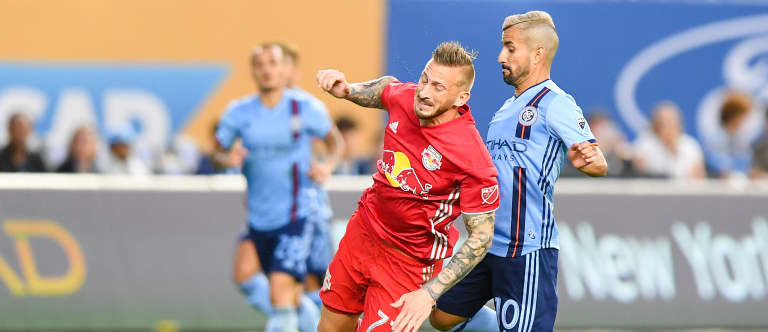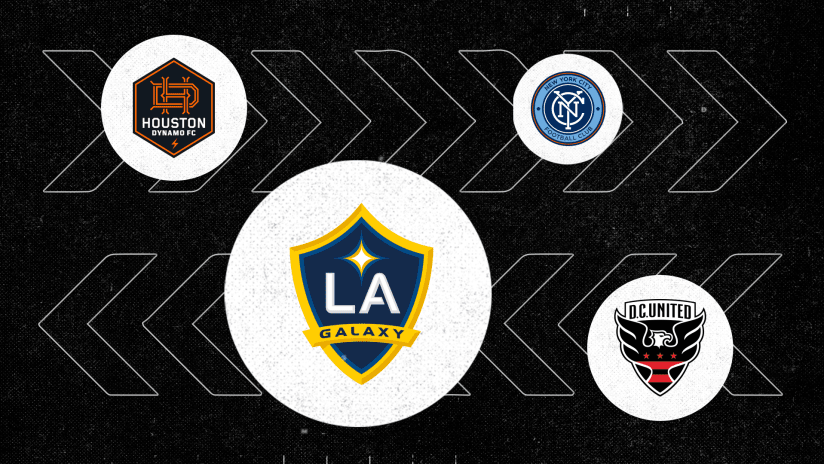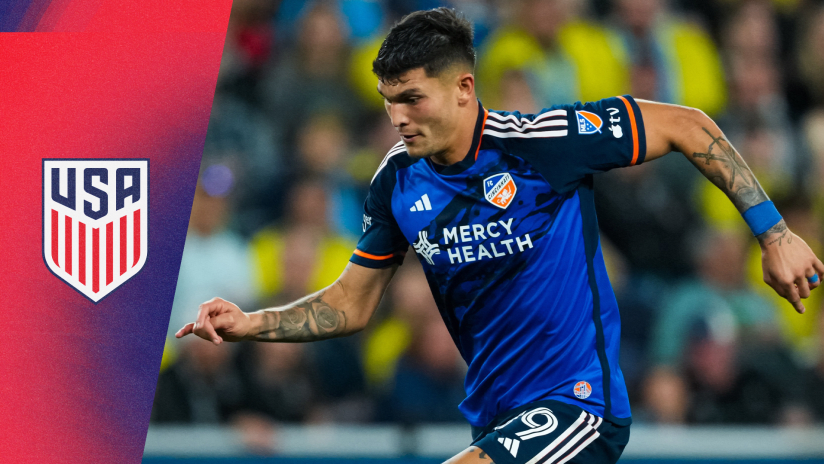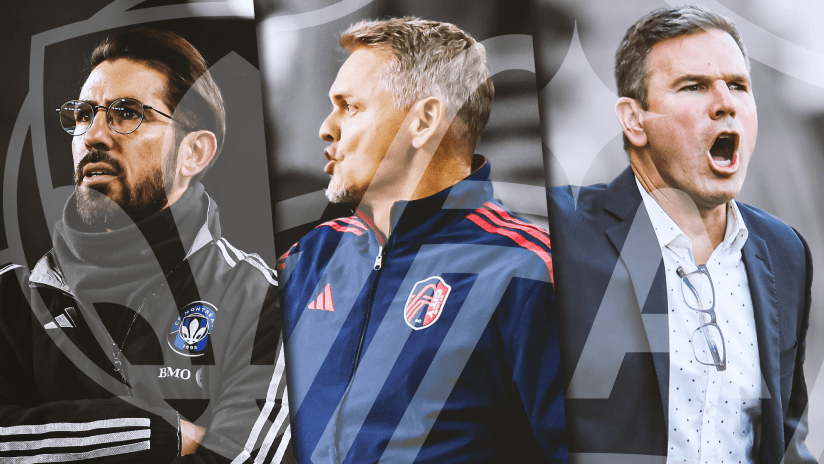It's been five years since the infamous Red Wedding match in the New York Derby.
It was a dream for the red half of the New York metropolitan area and a nightmare for the light blue side, as the New York Red Bulls stormed to a 7-0 victory at Yankee Stadium. It's a game that will forever go down in trash talk and tifo culture, the same way New York City FC fans tease the "New York" Red Bulls for having a home arena in New Jersey and RBNY fans tease NYCFC for playing at a baseball stadium.
As was no more evident than the Red Wedding, the Red Bulls owned the first era of this rivalry.
By the end of 2016, the Red Bulls won five of the first six encounters with NYCFC and were sporting a +13 (!) goal differential in the matches. Like any true rivalry, there are ebbs and flows. The last few seasons have been close in head-to-head matches, but NYCFC have found much more success, though no trophies.
NYCFC have finished ahead of RBNY in three of the last four years, though the only time the Red Bulls outpaced the Cityzens they had the Supporters’ Shield to show for it (2018). Ever since, NYCFC have picked up 134 points to RBNY’s 102. With NYCFC viewed among the contenders for MLS Cup this year, while the Red Bulls are hoping to keep their playoff hopes alive after a midsummer slump, the Bronx bunch are on pace to finish ahead of the Red Bulls for the fourth time in five years.
In recent seasons, the rivals have taken similar approaches to roster building but with some key differences that may explain NYCFC's current ascendancy going into Saturday's Heineken Rivalry Week clash at Red Bull Arena (8 pm ET | FS1, FOX Deportes).
Here’s the TL;DR for general ethos: Young players and global scouting networks.
It’s not quite that simple, of course, but that’s the elevator pitch. That’s the thru line, that’s the middle circle of the Venn Diagram from a macro, elementary view. #Analysis. Both have invested and focused resources on young players, both domestic and abroad.
The Red Bulls have leaned into youth a little further, though, with NYCFC more balanced in age and having spent much more money on South American rising talents.
First: RBNY. At the season’s start, over half of their roster was 23 or younger. More than half!
Since this tweet, stalwart veteran Aaron Long suffered a season-ending injury; Florian Valot and Brian White were traded; David Jensen was loaned. Lucas Monzon (19) was acquired and Matias Jorgenson (20) returned from loan.
So they got even younger (!), currently with an average age of 23.3. They have 10 players who have played more than 1,000 minutes this season, coming in at an average age of 22.7.
“The vision of this football club is achieving performance, but doing that in a particular way, which relates to a football identity and young players,” head of sport Kevin Thelwell told media in December. “I don’t think we should be afraid to say that, it’s not a dirty word. We want to develop our own players and give them opportunities."
Academy graduates recent and established have played regular roles, including captain Sean Davis, rising fullback John Tolkin and right back Kyle Duncan.
Their position within Red Bull global has helped in regards to their scouting network. RBNY acquired players 23 or younger from Scotland (Patryk Klimala), Brazil (Fabio), Venezuela (Wiki Carmona), England (Tom Edwards), Uruguay (Monzon), Austria (Youba Diarra), Colombia (Andres Reyes) and domestically (Frankie Amaya, Bento Estrela, Luca Lewis) this year alone.
NYCFC can point to similar squad resources devoted, but have invested more heavily. In particular on three effervescent attackers: Talles Magno, Santi Rodriguez and Thiago Andrade.
Magno and Andrade were signed permanently, and Rodriguez is on loan from sister club Montevideo City Torque. Transfer fees paid by City Football Group for the trio are reportedly in excess of around $15 million.
“I think we are extremely happy with the roster we’ve got, having the continuity that we have from last year to this, which we thought was one of the best rosters in MLS,” NYCFC sporting director David Lee said in January. This was months before acquiring Magno, Rodriguez and Andrade. “We’ve got the majority of those players back, so I think we are happy with the roster we’ve got."
Perhaps slightly earlier than the Red Bulls reaped the benefits of scouting contributions from RB Global, NYCFC were tapping into CFG's vast networks. They added the likes of Yangel Herrera, Taty Castellanos, Heber, Nicolas Acevedo and more in the past before spending lavishly on their trio of South American imports this year.
Both clubs have been two of MLS' leaders when it comes to developing academy talent, both for enriching their own first teams and exporting them to top clubs in Europe. With James Sands leading the way and Andres Jasson and Tayvon Gray earning first-team minutes this year, NYCFC can argue that they've now moved ahead of RBNY in the academy battle for producing the area's top talent in the first team and abroad.
MLSsoccer.com's Dylan Butler wrote in-depth on the topic in 2019, but NYCFC can point to Sands, Borussia Dortmund's Gio Reyna and Borussia Monchengladbach's Joe Scally as crown jewels in recent years (particularly players born after 1999).
The Red Bulls, who previously produced USMNT and RB Leipzig regular Tyler Adams, have Caden Clark and Tolkin as key recent homegrowns, though Clark wasn't produced by RBNY. He joined in 2020 and signed for New York Red Bulls II originally after featuring for Minnesota Thunder and Barca Residency Academy during his youth career.
One key fork in the road where the rivals divulge is NYCFC’s inclusion of more late-prime veterans.
NYCFC’s average age sits at 25.7. The average age of players to play 1,000 minutes or more is 27.4. NYCFC have integral contributions from players 29 or over like Maxi Moralez (35), Anton Tinnerholm (30), Sean Johnson (32), Maxime Chanot (31), Alexander Callens (30), Alfredo Morales (31) and others.
NYCFC have largely retained a successful core from the last few years, though not without some key changes. The Red Bulls haven't retained much of their 2018 Shield-winning side. Key players Bradley Wright-Phillips, Tyler Adams, Kemar Lawrence, Tim Parker, Luis Robles, Kaku and Alex Muyl are no longer with the team. NYCFC finished third in the East that year but still have Johnson, Tinnerholm, Chanot, Moralez, Castellanos, Ismael Tajouri-Shradi and Jesus Medina from that team.

With Long injured, the Red Bulls are lacking key veteran contributions. Fellow veteran and centerpiece in recent years, Daniel Royer, has endured an injury-riddled 2021 and has fallen out of the club's strongest XI. Klimala is the only Red Bull player currently listed as a DP, while 21-year-old Dru Yearwood was also listed as a young DP last year.
Both clubs expend resources on young players, but NYCFC kept a DP spot for Moralez. Medina still counts as a young DP, but he's 24 now and enjoying his best season in MLS. Tinnerholm, Johnson, Chanot and Callens are some of NYCFC's highest-paid players.
For many reasons, the famous or – if you're on the NYCFC side – infamous "Red Wedding" game can seem a long time ago now. Not a single player from either starting XI remains on either roster. Only Davis remains on the Red Bulls from the matchday squad and he was an unused sub.
While the rosters, and ways of building them, have changed for both clubs, the rivalry's still one of the most anticipated encounters on both teams' schedule. And if that game five years ago tells us anything going into Saturday's clash, it's that anything can happen when these two rivals collide.












